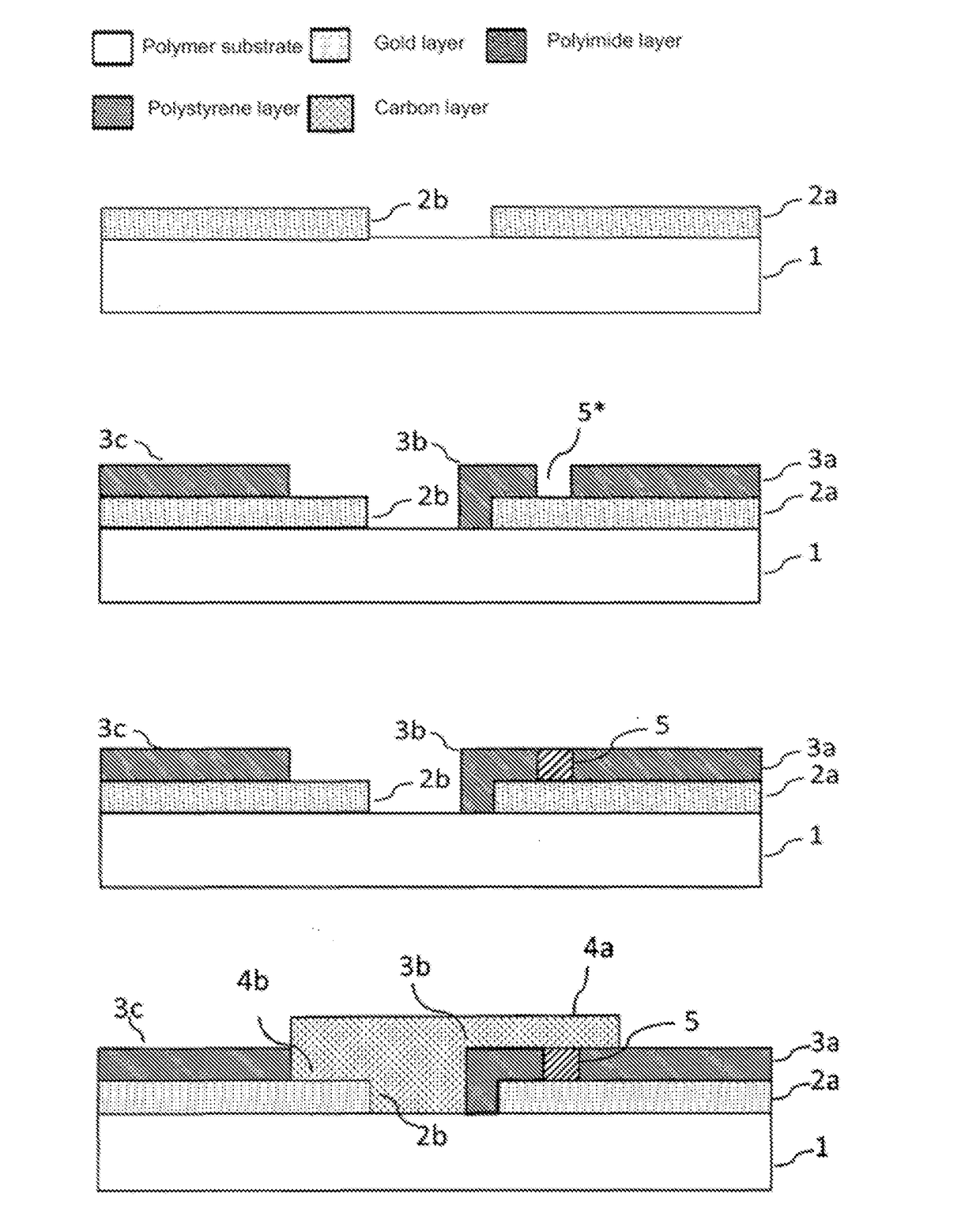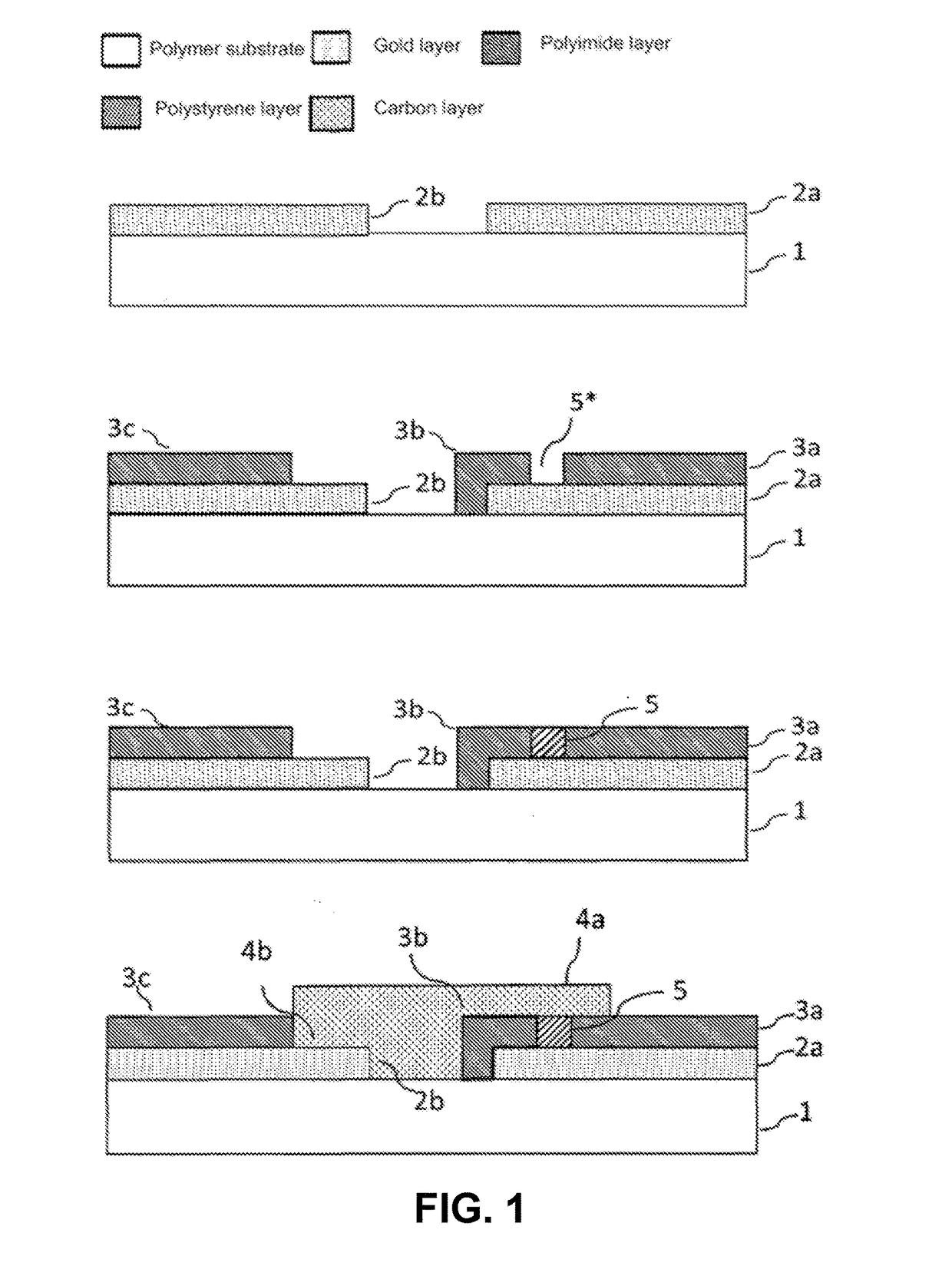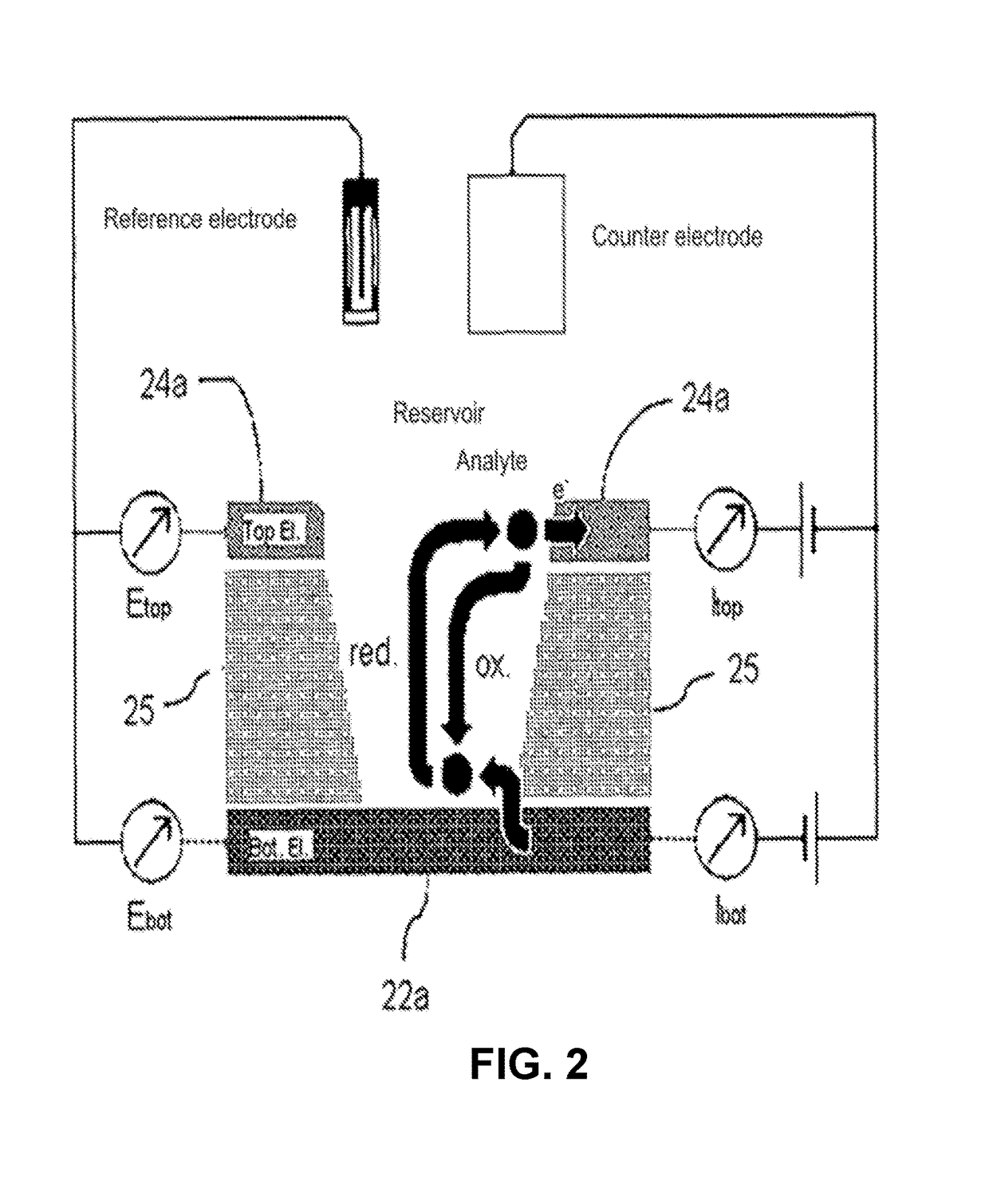Method for Producing a Device for Electrochemical Detection of Molecules by Way of Redox Cycling, Device Therefor and the Use Thereof
a technology of electrochemical detection and redox cycling, which is applied in the direction of instruments, material electrochemical variables, inks, etc., can solve the problems of amplification of the measurable overall signal, high cost during production, and inability to economically usefully scale production
- Summary
- Abstract
- Description
- Claims
- Application Information
AI Technical Summary
Benefits of technology
Problems solved by technology
Method used
Image
Examples
first exemplary embodiment
[0116]A sensor comprising sponge-like pores in the second electrode and in the dielectric is produced by way of the above-described method.
[0117]Step a): A gold ink is selected as the material for the first electrode 2a. The conducting structures made of the gold ink are printed onto a polyethylene naphthalate (PEN) substrate 1 using an ink jet printer, and are then sintered at 125° C. for 1 hour.
[0118]In this way, a first electrode 2a is formed on the substrate 1, which has either no pores or pores having a maximum size of 20 nm.
[0119]FIG. 1 shows a right region of the electrode 2a, which defines the active measuring region for the reaction of the redox-active substance (not shown). Furthermore, a left region made of sintered gold ink 2b on the substrate 1 is shown, to which a voltage is applied and which thus represents a conductor track. The region 2a of the first electrode extends to the right out of the image plane and is contacted with a potentiostat to apply voltage.
[0120]Pas...
second exemplary embodiment
CLING SENSOR FOR THE DETECTION OF OVALBUMIN
[0131]A second sensor comprising sponge-like pores in the dielectric and the second electrode is produced as follows by way of an above-described method (FIG. 1):
[0132]Steps a) and c) and the passivation follow exemplary embodiment 1.
[0133]Step a): A gold ink is selected as the material for the first electrode 2a. The conducting structures made of the gold ink are printed onto a polyethylene naphthalate (PEN) substrate 1 using an ink jet printer, and are then sintered at 125° C. for one hour.
[0134]In this way, a first electrode 2a is formed on the substrate 1, which has either no pores or pores having a maximum size of 20 nm.
[0135]FIG. 1 shows a right region of the electrode 2a, which defines the active measuring region for the reaction of the redox-active substance (not shown). Furthermore, a left region made of sintered gold ink 2b on substrate 1 is shown, which is used for the application of the voltage and thus represents a conductor tr...
PUM
| Property | Measurement | Unit |
|---|---|---|
| surface area | aaaaa | aaaaa |
| surface area | aaaaa | aaaaa |
| surface area | aaaaa | aaaaa |
Abstract
Description
Claims
Application Information
 Login to View More
Login to View More - R&D
- Intellectual Property
- Life Sciences
- Materials
- Tech Scout
- Unparalleled Data Quality
- Higher Quality Content
- 60% Fewer Hallucinations
Browse by: Latest US Patents, China's latest patents, Technical Efficacy Thesaurus, Application Domain, Technology Topic, Popular Technical Reports.
© 2025 PatSnap. All rights reserved.Legal|Privacy policy|Modern Slavery Act Transparency Statement|Sitemap|About US| Contact US: help@patsnap.com



